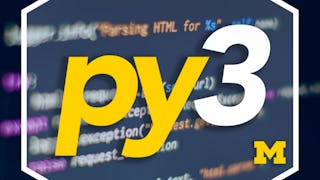This comprehensive beginner-level course equips learners with the skills to build, configure, and deploy full-featured web applications using the Python Pyramid framework. Through six progressively structured modules, learners will explore the core components of Pyramid, from setting up a virtual environment and configuring routing to designing scalable view logic, handling forms, and applying advanced rendering techniques.



(14 reviews)
Recommended experience
Skills you'll gain
Details to know

Add to your LinkedIn profile
18 assignments
July 2025
See how employees at top companies are mastering in-demand skills

There are 6 modules in this course
This module introduces learners to the Pyramid microframework and prepares the development environment using VirtualBox and Ubuntu. It guides the setup of essential dependencies, establishes the foundation for WSGI-based application development, and explores how Pyramid compares with other Python web frameworks. The module culminates in the creation of a basic Pyramid application, enabling learners to apply key architectural concepts and validate their setup.
What's included
7 videos3 assignments
This module explores how Pyramid handles templates, asset specifications, and dynamic response rendering. Learners will examine view callables using both functions and classes, utilize multiple rendering engines, and understand how Pyramid automatically processes return values using response adapters. The module also focuses on performance enhancement through HTTP caching, introduces techniques for automating configuration using config.include(), and provides insight into advanced features like introspection and declarative configuration using decorators.
What's included
8 videos3 assignments
This module guides learners through the practical steps of configuring, creating, and running a Pyramid web application. Beginning with a basic “Hello World” setup, the lessons explain the use of the WSGI server, routing mechanisms, and the essential configuration methods needed to map URLs to view callables. Learners also gain hands-on experience with setting up a Pyramid project using scaffolding tools, understanding the structure of a Pyramid package, and identifying the function of key directories such as templates/, static/, and __init__.py. By the end of this module, learners will be equipped to build and run a fully functional Pyramid application with proper configuration and project organization.
What's included
7 videos3 assignments
This module provides an in-depth look at how Pyramid handles routing in web applications. Learners explore URL dispatching, dynamic and static route configuration, and the process of matching incoming requests to appropriate view callables. The module introduces route patterns, route matching order, and tools for generating URLs dynamically. It also covers the setup of static routes for serving assets like CSS and JavaScript, along with powerful debugging techniques using match dictionaries and predicates. Advanced topics such as predicate callables and route factories are also introduced to enable conditional routing and context-driven view resolution.
What's included
9 videos3 assignments
This module explores the core concept of view callables in Pyramid, demonstrating how they receive requests, generate responses, and integrate with Pyramid’s routing and templating systems. Learners will understand how to define view callables using functions, classes, or callable objects and how to handle HTTP exceptions within views. The module also introduces practical techniques for handling form submissions, using built-in renderers such as JSON and Chameleon templates, and returning structured responses. By the end, learners will be able to construct interactive, form-driven web interfaces that respond dynamically to user input using Pyramid's flexible view and rendering system.
What's included
6 videos3 assignments
This module focuses on advanced rendering techniques and template handling within Pyramid applications. Learners will explore how to manipulate response attributes such as content type and charset, use system values in templates, and directly control rendering behavior using built-in and custom renderers. The module introduces template macros for creating reusable UI components and explains how Pyramid integrates with Chameleon for efficient and maintainable server-side rendering. Attention is also given to the side effects of improper escaping and best practices for template structure and rendering performance.
What's included
6 videos3 assignments
Why people choose Coursera for their career




Learner reviews
14 reviews
- 5 stars
64.28%
- 4 stars
35.71%
- 3 stars
0%
- 2 stars
0%
- 1 star
0%
Showing 3 of 14
Reviewed on Aug 31, 2025
A beginner-friendly guide to Python Pyramid framework, with clear steps and examples for building scalable web applications easily.
Reviewed on Sep 11, 2025
Good for starters, basic concepts explained well, but lacks depth and real-world examples for serious learners.
Reviewed on Sep 25, 2025
Good introduction to Pyramid framework, but lacks real-world examples and deeper project-based learning.
Explore more from Computer Science

University of Michigan

Coursera Project Network

Arizona State University

Coursera Project Network


